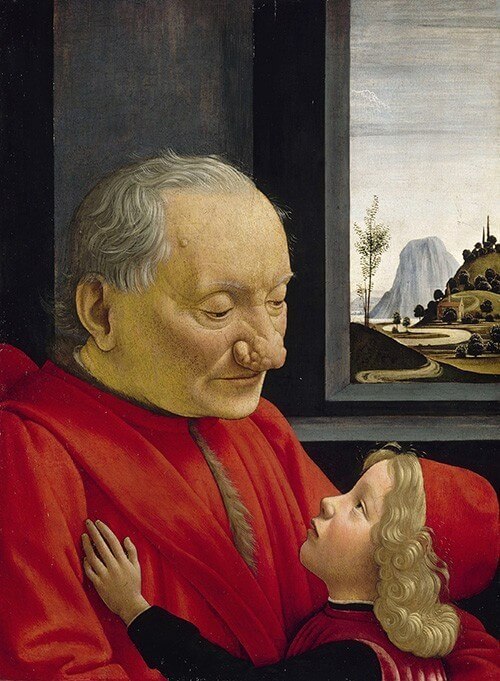When the National Rosacea Society was founded 25 years ago, very few Americans were aware of this chronic skin disorder, even though it’s now estimated to affect more than 16 million in the US alone. Here is a timeline that traces the recorded history of rosacea in art, literature and medical texts up to the present:
 1300s: Dr. Guy de Chauliac, a French surgeon living in the 14th century, wrote about "red lesions in the face, particularly on the nose and cheeks." He called the condition "goutterose" (French for "pink droplet") or "couperose" (still a common French term for rosacea).
1300s: Dr. Guy de Chauliac, a French surgeon living in the 14th century, wrote about "red lesions in the face, particularly on the nose and cheeks." He called the condition "goutterose" (French for "pink droplet") or "couperose" (still a common French term for rosacea).
1400s: Chaucer’s Canterbury Tales includes a character called the Summoner who suffers from a rosacea-like illness.
1480s: A painting called "The Old Man and His Grandson" by Ghirlandiao shows a man who appears to have rosacea. Today it hangs in the Louvre.
1500s: Treatments for rosacea at this time included the use of salves containing such ingredients as mercury, sulphur and bull's blood. Other treatments included blood-letting in the arm, forehead and nose, as well as applying leeches on affected areas.
1590s: Bardolf, a character in Shakespeare’s Henry IV and other plays, has the red bulbous nose of rhinophyma, commonly known today as phymatous rosacea.
1812: A written reference to "acne rosacea" appears in an English medical text by Dr. Thomas Bateman, who noted, "The perfect cure of acne rosacea is, in fact, never accomplished."
 1817: One of the earliest images of rosacea is included in On Cutaneous Diseases by Dr. Robert Willan. Hand-colored illustrations in medical textbooks were used to aid physicians in diagnosing diseases and distinguishing one condition from another.
1817: One of the earliest images of rosacea is included in On Cutaneous Diseases by Dr. Robert Willan. Hand-colored illustrations in medical textbooks were used to aid physicians in diagnosing diseases and distinguishing one condition from another.
1834: In physician Robert Macnish's book Anatomy of Drunkenness, the connection between wine and rosacea is explicit: “His nose is well studded over with carbuncles of the Claret complexion; and the red of his cheeks resembles very closely the hue of that wine.”
1900s: W.C. Fields is a prominent comedic actor in America, appearing in Vaudeville shows, silent films, and talkies. He’s known for his signature red bulbous nose and red face owing to phymatous rosacea.
1988: The first therapy specifically for rosacea was approved by the FDA. It was designated as an “orphan drug,” reflecting the belief at the time that fewer than 200,000 Americans suffered from the condition.
1989: An epidemiological study found that approximately 10 percent of Swedes had rosacea. These and later studies were extrapolated to estimate that around 5 percent of Americans — or 16 million — now suffer from the disorder.
1992: The National Rosacea Society (NRS) was formed to raise awareness and provide public health information on this little-known medical condition.
2000: The NRS launched its Research Grants Program to encourage and support research into potential causes and other key aspects of rosacea that may lead to improvements in its treatment and potential prevention or cure. Since then, this patient-funded program has awarded $1.5 million in research grants to support a wide range of rosacea-related studies.
2002: The “Standard classification of rosacea” was published by the NRS Expert Committee on the Classification and Staging of Rosacea, providing universal criteria and terminology for research, diagnoses and communications on the disorder.
2004: The NRS Expert Committee published a standard grading system for rosacea to aid medical research and clinical practice.
2009: Based on the standard classification and grading systems, the NRS Expert Committee published a report on standard management options for rosacea to assist in providing optimal patient care.
2017: Today we now know quite a bit about the disease process of rosacea, and a growing range of medical therapies are now available for its specific signs and symptoms. Yet despite these advances, only an estimated 18 percent of those who suffer from rosacea are currently receiving medical treatment.